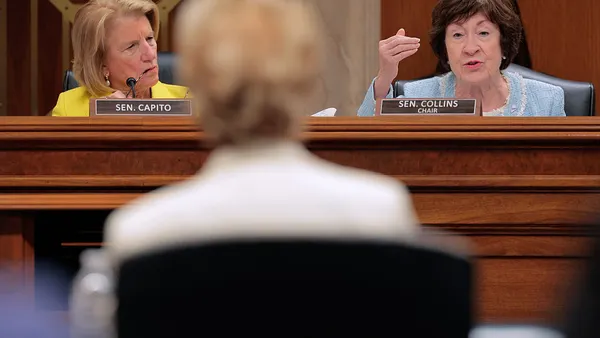NATIONAL HARBOR, MD — There's a lot about school and district management — like finances, curricula and special education — that is just tough to explain to noneducators.
But school professionals must try to better communicate these complex issues to spur greater opportunities for understanding and buy-in, said Bob Noyed, vice president of communications for The Center for Effective School Operations, a company that supports school administrative services. Noyed, who spoke during a Thursday session at the 2023 Association of School Business Officials annual conference, is also a former communications director for school districts.
"Your job in the world of schools is helping our stakeholders — our staff, our parents, our community — to help those folks understand the issues that we need them to understand," said Noyed. "You can't just say, 'Well, it's complicated,' and just let people [go] out in the wilderness."
Administrators should attempt to communicate the cost, value and impact of school programs. If only the cost of a project is communicated, district leaders may lose the opportunity to be transparent, as well as miss the valuable exchange of ideas and thoughts with an engaged public, Noyed said.
Noyed offered six steps school and district leaders can take to help the public better understand why administrators are making certain operational recommendations and how they impact students:
- Have a robust finance webpage. Simply posting budget documents won't help to further the public's knowledge or engagement. Noyed suggests districts post lively, descriptive and robust finance webpages with graphics or stories about particular projects.
Clear and engaging descriptions of budget items can alleviate misinterpretation from the public, Noyed added. He acknowledged, though, that redesigns may need to be done in stages as this can be a big task to take on. - Weave budget descriptions into other topics. Almost every initiative in a school or district is tied to a budget line item. Communicating the funding of a new curriculum initiative, for example, gives stakeholders a fuller picture of how the district anticipates the investment will impact students or the community.
- Don't use "inside" words. Avoid using jargon or technical terms only known to education insiders. If this can't be avoided, add a definition or explanation, and repeat the definition every time the term is mentioned.
- Expand beyond tables and charts. Use infographics, graphics and images to explain complex issues. Consider using multiple ways to communicate budget items. For example, Noyed previously helped a district use graphics and storytelling to explain the value of a $12 million project to replace windows at a school.
- Have key communicator networks. These networks can include both staff and community members who are interested in a deep understanding of complex issues. As these "ambassadors" learn more, they can share their understanding with friends and co-workers, Noyed said.
Information on complex school operations may need to be broken down into smaller chunks and repeated so people unfamiliar with these processes can better understand the context, value and impact of a project. - Embrace the role of communicator. Many school business leaders enjoy working with numbers and in school business operations, but they also need to be proficient in sharing that information with their school boards, superintendent, staff and the public.
"We need you to be folks who will help our communities understand the scope and the breadth of what's going on with the school district, and we need you to be really good at it," Noyed said.
















